Abstract
A serotyping scheme for Enterobacter cloacae based on heat-stable somatic antigens is described. A total of 28 antisera were prepared in rabbits, and titers of agglutinins were high (greater than 640). Some cross-reactions were observed, and 11 sera required absorption before routine use. Of 300 clinical isolates from 66 hospitals, 77.6% were typable, 11.4% were not agglutinated by any of the sera, and 11.0% were autoagglutinable in saline. The eight most frequent serotypes were O3 (21.3%), O8 (13.3%), O1 (7.6%), O13 (5.0%), O9 (4.7%), O10 (3.0%), O16 (3.0%), and O25 (3.0%).
Full text
PDF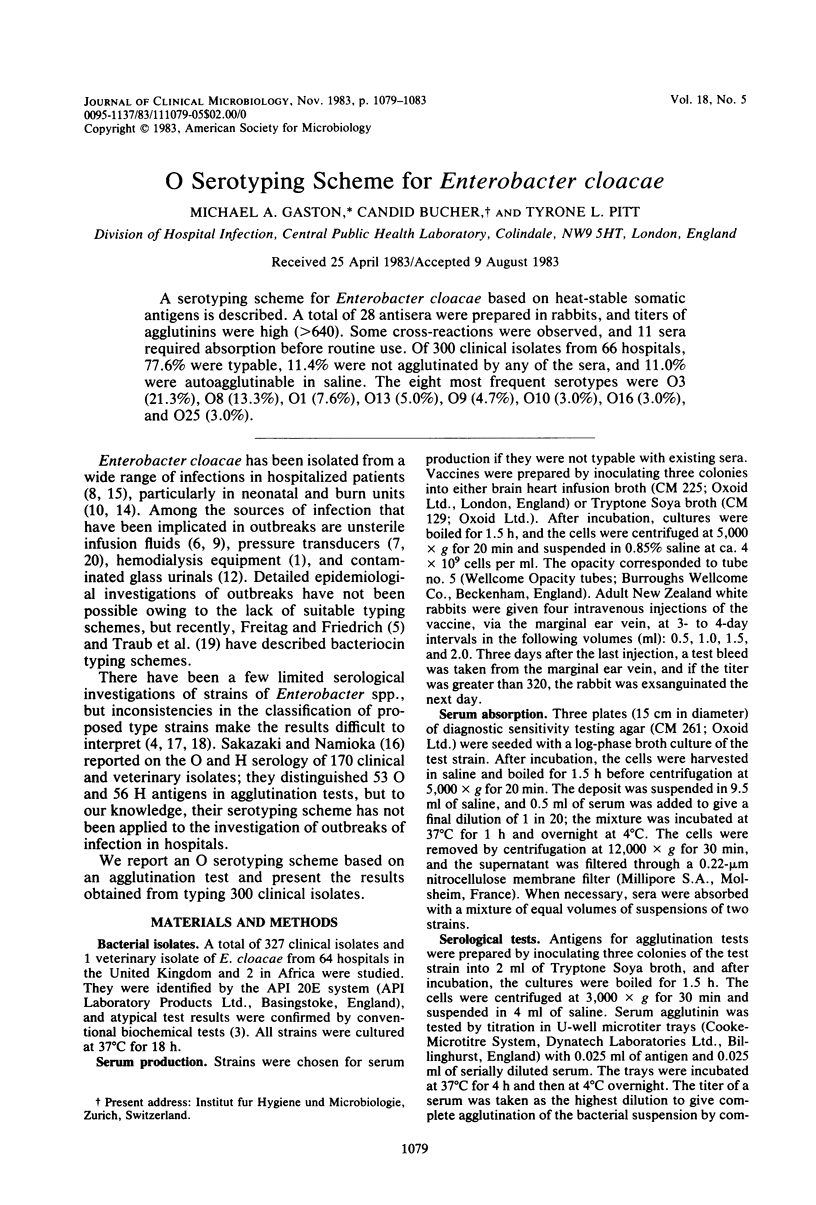
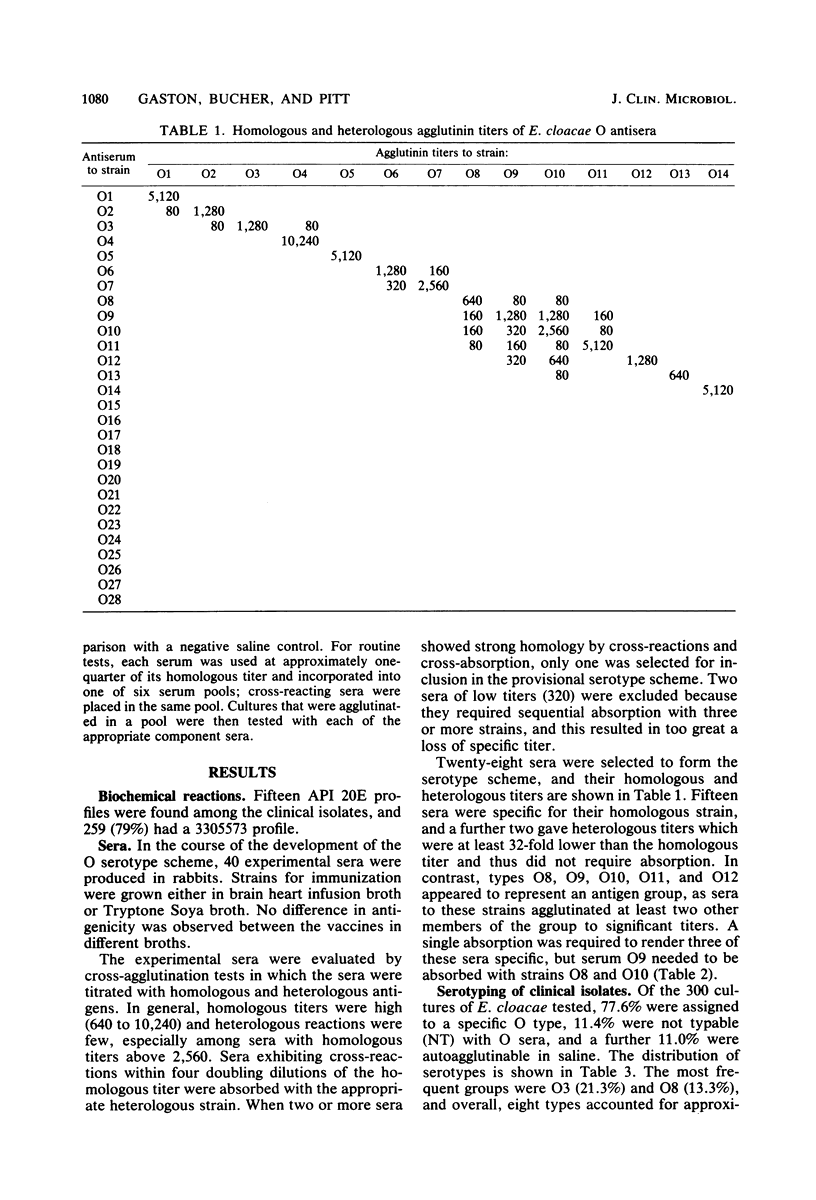
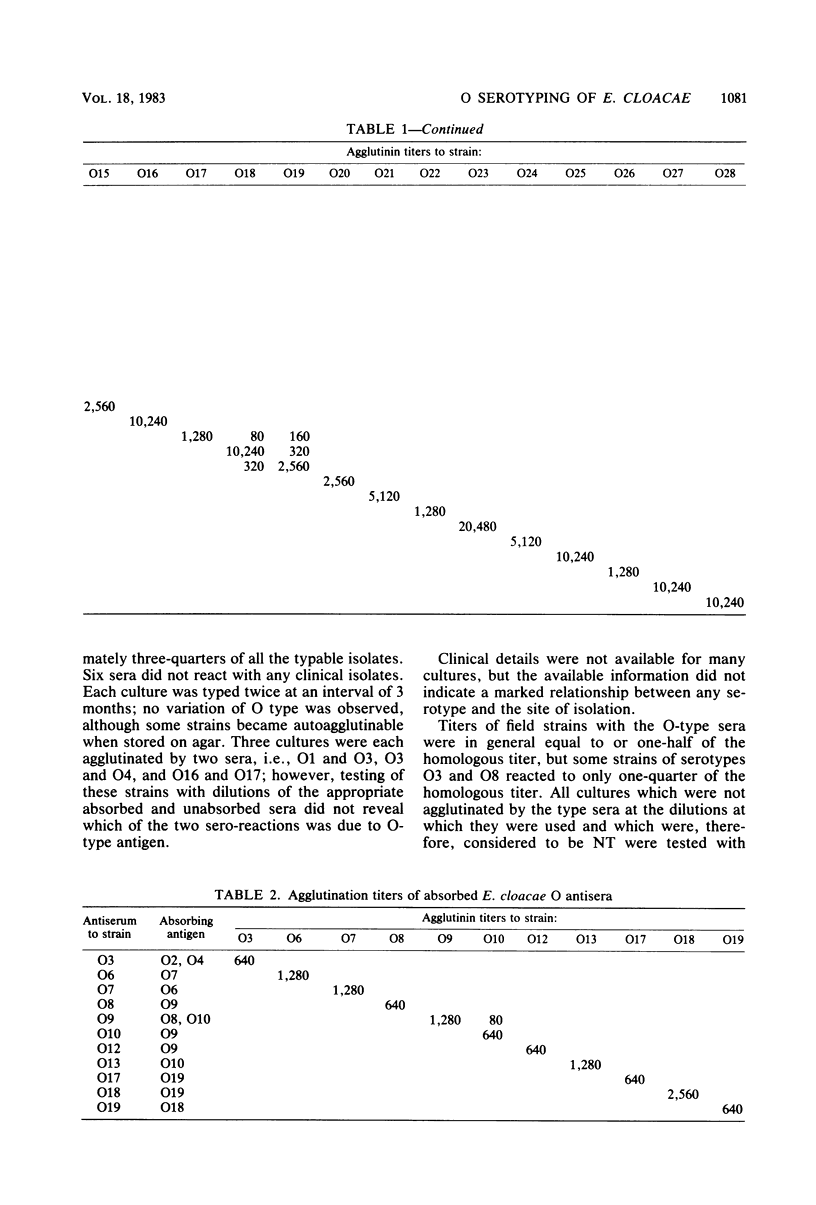
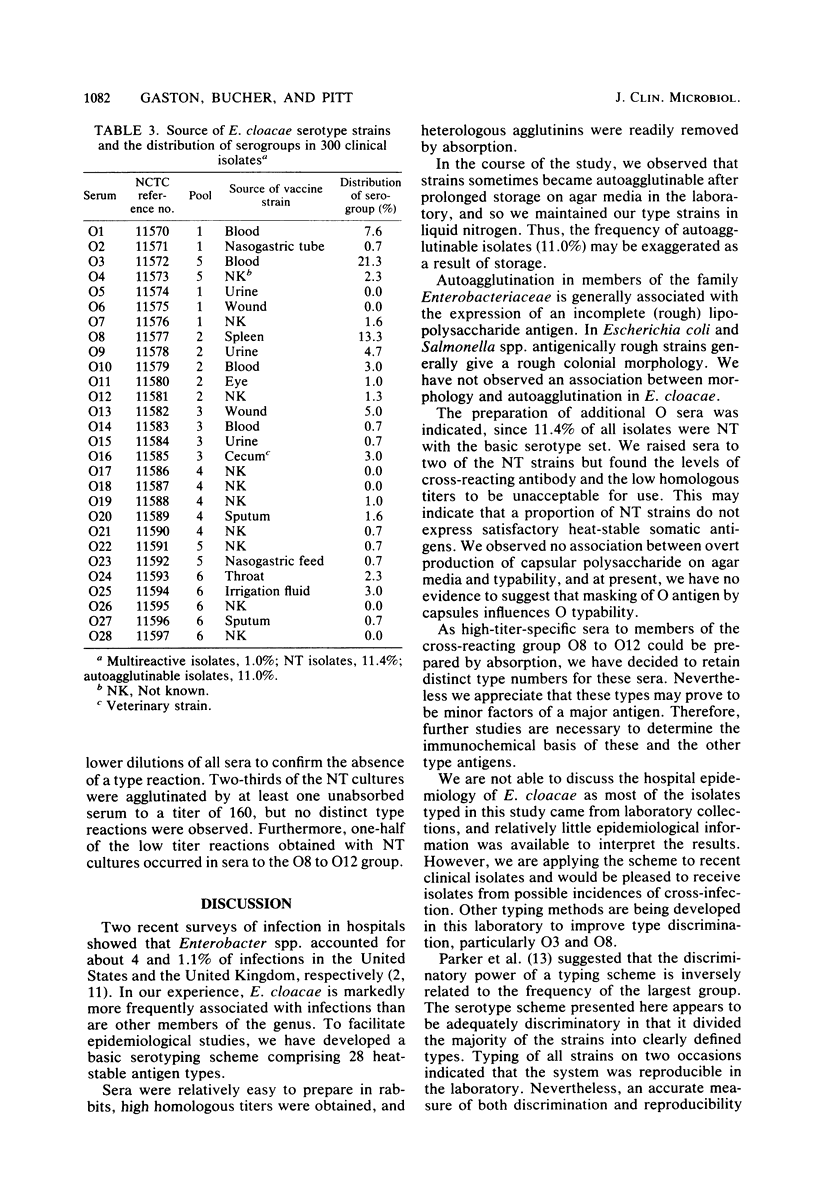
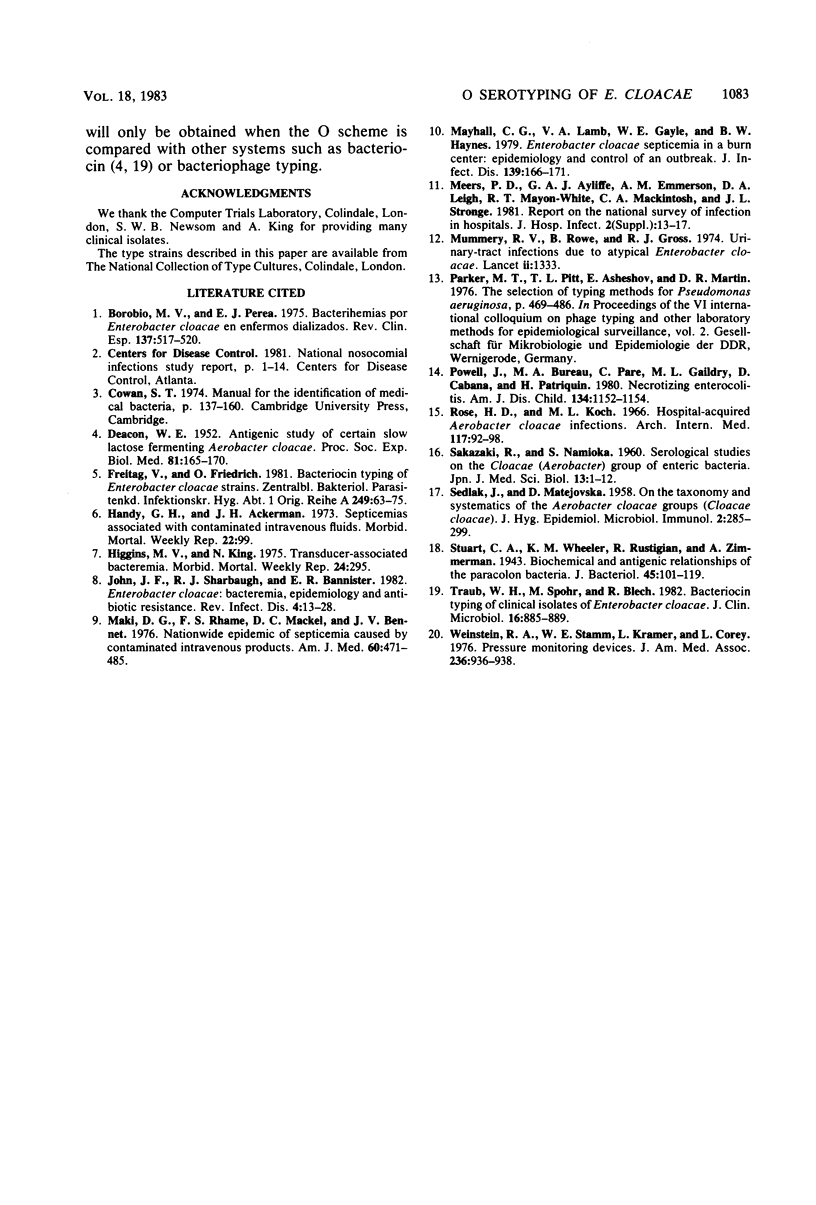
Selected References
These references are in PubMed. This may not be the complete list of references from this article.
- Borobio M. V., Perea E. J. Bacterihemias por Enterobacter cloacae en enfermos dializados. Rev Clin Esp. 1975 Jun 30;137(6):517–520. [PubMed] [Google Scholar]
- DEACON W. E. Antigenic study of certain slow lactose fermenting Aerobacter cloacae cultures. Proc Soc Exp Biol Med. 1952 Oct;81(1):165–170. doi: 10.3181/00379727-81-19812. [DOI] [PubMed] [Google Scholar]
- Freitag V., Friedrich O. Bacteriocintypisierung von Enterobacter cloacae-Stämmen. Zentralbl Bakteriol A. 1981 Mar;249(1):63–75. [PubMed] [Google Scholar]
- John J. F., Jr, Sharbaugh R. J., Bannister E. R. Enterobacter cloacae: bacteremia, epidemiology, and antibiotic resistance. Rev Infect Dis. 1982 Jan-Feb;4(1):13–28. doi: 10.1093/clinids/4.1.13. [DOI] [PubMed] [Google Scholar]
- Maki D. G., Rhame F. S., Mackel D. C., Bennett J. V. Nationwide epidemic of septicemia caused by contaminated intravenous products. I. Epidemiologic and clinical features. Am J Med. 1976 Apr;60(4):471–485. doi: 10.1016/0002-9343(76)90713-0. [DOI] [PubMed] [Google Scholar]
- Mayhall C. G., Lamb V. A., Gayle W. E., Jr, Haynes B. W., Jr Enterobacter cloacae septicemia in a burn center: epidemiology and control of an outbreak. J Infect Dis. 1979 Feb;139(2):166–171. doi: 10.1093/infdis/139.2.166. [DOI] [PubMed] [Google Scholar]
- Mummery R. V., Rowe B., Gross R. J. Letter: Urinary-tract infections due to atypical Enterobacter cloacae. Lancet. 1974 Nov 30;2(7892):1333–1333. doi: 10.1016/s0140-6736(74)90207-4. [DOI] [PubMed] [Google Scholar]
- Powell J., Bureau M. A., Paré C., Gaildry M. L., Cabana D., Patriquin H. Necrotizing enterocolitis. Epidemic following an outbreak of Enterobacter cloacae type 3305573 in a neonatal intensive care unit. Am J Dis Child. 1980 Dec;134(12):1152–1154. [PubMed] [Google Scholar]
- Rose H. D., Koch M. L. Hospital-acquired Aerobacter cloacae infections. Results of two concomitant studies. Arch Intern Med. 1966 Jan;117(1):92–98. [PubMed] [Google Scholar]
- SAKAZAKI R., NAMIOKA S. Serological studies on the Cloaca (Aerobacter) gruop of enteric bacteria. Jpn J Med Sci Biol. 1960 Apr;13:1–12. doi: 10.7883/yoken1952.13.1. [DOI] [PubMed] [Google Scholar]
- Stuart C. A., Wheeler K. M., Rustigian R., Zimmerman A. Biochemical and Antigenic Relationships of the Paracolon Bacteria. J Bacteriol. 1943 Feb;45(2):101–119. doi: 10.1128/jb.45.2.101-119.1943. [DOI] [PMC free article] [PubMed] [Google Scholar]
- Traub W. H., Spohr M., Blech R. Bacteriocin typing of clinical isolates of Enterobacter cloacae. J Clin Microbiol. 1982 Nov;16(5):885–889. doi: 10.1128/jcm.16.5.885-889.1982. [DOI] [PMC free article] [PubMed] [Google Scholar]
- Weinstein R. A., Stamm W. E., Kramer L., Corey L. Pressure monitoring devices. Overlooked source of nosocomial infection. JAMA. 1976 Aug 23;236(8):936–938. doi: 10.1001/jama.236.8.936. [DOI] [PubMed] [Google Scholar]


